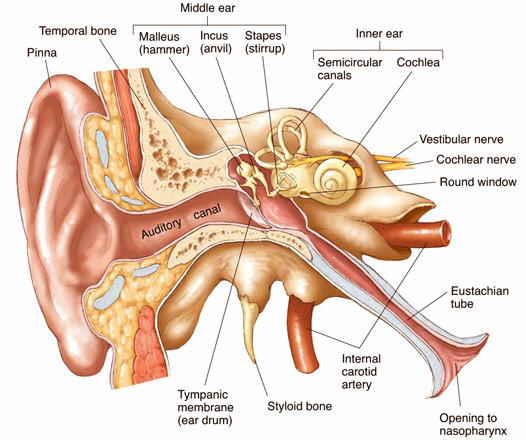“One morning, I woke up dizzy. I felt unsteady and I could be nauseous.”
“I felt like the room was spinning. I am scared that I would lose my balance and fall, and injure myself just to stand or try to walk.”
This is the common story we hear from our clients who suffer from dizziness or vertigo.
Dizziness is a range of sick sensation or feelings of light-headed, faint, woozy or losing your sense of balance.
Vertigo may cause a feeling of dizziness too, but it is distinct due to its spinning sensation.
You may feel like you got motion sickness or you are leaning to one side all the time.
Get rid of such uncomfortable sensation and be yourself 100%!
What is BPPV?
Benign Paroxysmal Positional Vertigo (BPPV) is one of the most common vestibular conditions that we see at our clinic.
The vestibular system is a part of your inner ear. It is a contributor to our sense of balance and space orientation.
Your head position is constantly monitored by the vestibular system in your inner ear canals. There are 3 semicircular canals in the inner ear and they are oriented in 3 dimensions; horizontal, posterior and superior. Each canal contains fluid that flows according to your head position so that it senses its own dimension.
However, when a small round crystal deposit (otolith; made of calcium deposit) gets dislodged and accidentally enters one of the canals, the crystal can interfere with the accurate sensing of head position.
This confuses the brain.
Because the brain also receives information about head position from visual nerves and other sensory information from muscles and joints, but information from the vestibular system doesn’t match up with the information from the rest of the body. As a reaction, it causes losing sense of balance, dizziness with nystagmus (rapid eye movement) and/or nausea and sometimes vomiting.

The studies suggest that upto 90% of BPPV occurs in the posterior semicircular canal and there has been much focus on the effective treatment for it. There is a technique to treat with upto 90% success rate followed by a home exercise program. However, neck issues can be a cause of dizziness, too. It is important to see an experienced professional who deals with both BPPV and also cervical dizziness. It could be one of, or a mixture of the two conditions, or none of them.
The most important start is to ensure you obtain a correct diagnosis.
We have the expertise and experience to effectively treat BPPV and a range of cervical issues. We will make your visits worthwhile to regain your full life again.

Who gets BPPV often?
Everyone in healthy condition still has a chance to get BPPV one day suddenly. Mostly it is triggered by head movement; particularly when lying down, looking down, turning in bed or following a head trauma such as heading at a soccer game.
However, people with the following characteristics have higher possibility of getting BPPV, and it could occur repetitively.
- Age 50 and older
- Had a head and/or neck trauma
- is/was a frequent swimmer
- Past history of middle ear inflammation/infection
Other Vestibular Conditions
BPPV is the most common condition we see at our clinic. Other vestibular conditions we provide rehabilitation are;
- Vestibular Migraine: Cervicogenic / neck-related dizziness
- Labyrinthitis / vestibular Neuritis: inflammation of the inner ear
- Acoustic neuroma / Vestibular Schwannoma
- Mal de Debarquement: Severe version of car sickness, disorientation after travelling by a car, train, airplane or boat
- Peripheral Hypofunction / Central Vestibular Disorder
- Meniere’s Disease




